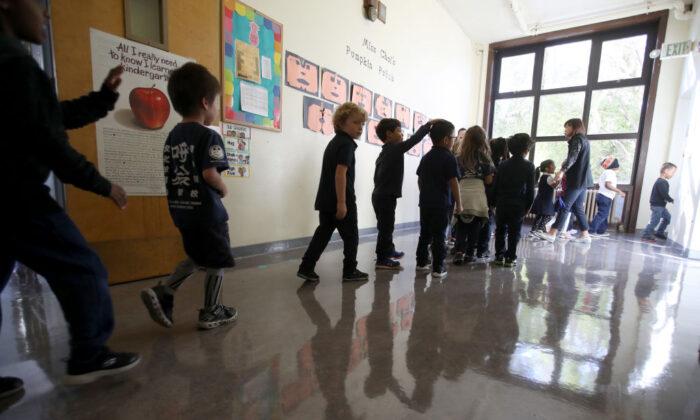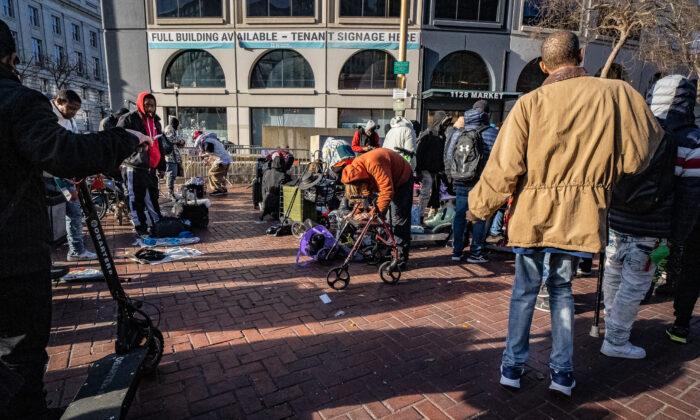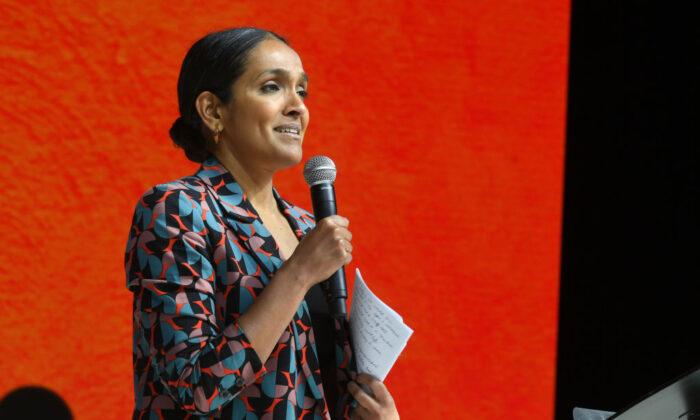In 2019, the state had 11.3 births for every 1,000 residents, the state’s lowest rate in over a century.
The long-term effect of the state’s dropping birth rate is “hard to predict,” because the current administration’s border policy has made immigration numbers unclear, John Moorlach, a former state senator and Orange County supervisor, told The Epoch Times.
But if immigration is minimized and there’s zero growth, Moorlach said “the old rule in businesses” would apply, “If you’re not growing, you’re dying.”
And while some researchers assumed there would be another baby boom during the pandemic, the stay-at-home orders apparently have had the opposite effect, resulting in historic lows for births across the country.
“There was the pandemic itself, but then there was also, of course, the economic situation: People are losing their jobs,” Dr. Brady Hamilton, statistician and demographer at the Centers for Disease Control and Prevention’s (CDC) National Center for Health Statistics (NCHS), told The Epoch Times.
Part of a Trend
Hamilton and other researchers at the CDC released preliminary data for birth rates in the United States in 2020, based on nearly all of the birth records received and processed by the NCHS last year.For women aged 20 to 24, the provisional birth rate last year was 62.8 births per 1,000 women, down 6 percent from 2019. The rates were lower in all major age and racial groups.
Hamilton said that while the data give some insight into the situation, further investigation is needed to get a clear picture.
“That has to wait for the surveys to sort of tease that out,” Hamilton said. “But we can do quite a lot on our own part, looking at the impact that this downturn has had across the country by the various groups to get a better sense of how it affected the births.”
According to Hamilton’s research, the total fertility rate among women nationally also dropped in 2020, down 4 percent from 2019.
Though birth rates vary among married and unmarried couples, marriage licenses are also at record lows, according to the California Department of Finance (CDF).
“Based on data as reported by select California counties, there has been an overall decrease in marriage licenses issued compared to previous years beginning with March 2020,” the CDF told The Epoch Times in an emailed statement.
When it comes to babies born in and outside of marriages, the CDC will look deeper into that in its next countrywide report, expected to be released this month.
“We don’t typically have it in the provisional report,” Hamilton said. “Our report does have births to married and unmarried mothers, we have that, but it’s not typically in the provisional report—but that’s another dimension that we'll look at.”
Affordability
Frank Bean, a professor of sociology and the director of the Center for Research on Immigration, Population, and Public Policy at the University of California–Irvine, has some ideas on California’s falling birth rate.“One thing I think is important is that 90 percent of the population in the United States is not making any more money than they did 20 years ago, 30 years ago,” Bean told The Epoch Times. “Parents are making less, once you adjust for inflation. In other words, incomes have been stagnant or declining, especially for people at the bottom.”
In today’s modern economy, people have children when they can afford them, he said. And during the pandemic, when child care services weren’t readily available, that also factored into couples’ decisions.
“Almost all the circumstances operate against having the kind of flexibility, resources, and long-term goals that childbearing entails,” Bean said.
Places like Orange County—where wages are higher and more women are in the workforce—provide better environments for childbearing, he said.
Immigration and Education
Immigration and the rate of movement into California also will skew the data, people familiar with the situation say.Bean, who has studied migration from Latin American countries, said he found that women who are foreign-born tend to have more children than U.S.-born women. But recently, the rate of second- and third-generation Latina women having children is also declining.
“The second-generation Latina women and the third-generation Latina women have fewer children than the foreign-born Latina women. And the bulk of the Latino population is Mexican American ... but their fertility has been going down too,” he said.
Bean said the children and grandchildren of immigrants aren’t much different from the general population.
“As more embedded and active they are able to become in the American economy and American society, the more their childbearing patterns look just like the rest of the population.”
People are also waiting longer to have children because it’s “not as easy as it was 30 years ago” to raise kids, he said.
“There’s lots more labor-saving devices and technological changes and so on, but in terms of how much money people make [and] how much they have to pay for housing, it’s much more difficult,” he said.
The rise of women in the workforce is also adding to the falling rates. There are a lot more demanding professional jobs available to women than there were three decades ago, Bean said, such as medical or law work. And people who stay in college longer to earn advanced degrees tend to slow down childbearing.
“But the one group that’s having larger families—quite a bit larger—are rich people. They are more likely to have three or more children,” said Bean. “That’s not very many people, but it’s kind of notable—and it proves the point that you really do have [to have] all the resources to take care of all these things she needs, like child care.”
He said some people have enough money that they can earn a law degree, work a professional job, have lots of kids, and still “enjoy family life.”
Long-Term Impact
The dropping birth rate might take 20 or 30 years before it has a noticeable impact, according to Moorlach, who said there may be benefits as well as disadvantages.“We still have other issues where a declining population might be a good thing,” he said, citing concerns about the water supply, housing shortages, and overcrowded freeways.
“So it gets really interesting, but the biggest concern is going to be whether or not the one-percenters leave.”
Moorlach said another demographic might also come into play: age.
“The population gets older, which means you have to have more people servicing those individuals. And so it gets to be a real, real interesting problem,” he said.
Moorlach said he likes to “look for corollaries” when analyzing situations; in this case, by studying states that are also not growing, and how that has affected them over a 10- or 20-year period.
“Obviously, I’ve been to Michigan and I drove through Detroit. That’s awful. You know, when you see empty houses and boarded-up factories ... that’s not pretty,” he said, mentioning Illinois, New Jersey, and New York as other states that have seen significant exoduses.
Moorlach drew a correlation between raising taxes on the wealthy and dwindling state populations by looking at Connecticut, which he called a suburb of New York.
“We saw that when they raise the tax on the wealthy, that the wealthy reduce their taxable income by 50 percent,” he said. The wealthy “know how to buy tax-exempt bonds or set up charitable trusts or whatever ... to reduce their taxable income.”
“But then their legislature had to respond by raising taxes on the middle class.”
“Obviously, if we have an infrastructure that isn’t growing ... it’s going to be somebody” who winds up paying more, he said. “You squeeze that balloon and maybe it could just be the middle class that will have to start putting in a larger share of the tax revenues to support an infrastructure that is [currently] growing too fast thanks to all the money that’s showing up.”
He said that Gov. Gavin Newsom “isn’t thinking recession” yet—but when it comes, “it’s going to be really awful.”
“It’s gonna be worse than what [former Gov.] Arnold Schwarzenegger faced when he showed up in it during the liquidity crisis,” he said.





